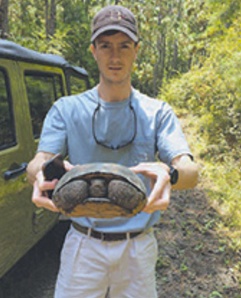Atlanta developer Robin Loudermilk Jr. is known for building residential and mixed-use developments in Midtown and Buckhead Village. But his latest real estate venture doesn’t have any buildings at all.
Loudermilk and his company, The Loudermilk Cos. LLC, has gone into the mitigation banking business. He has restored four different tracts of land in Georgia of varying sizes where wetlands and streams have been negatively impacted; in return, the govern-ment has granted him a “virtual bank” of credits that can be sold to other businesses.
Under section 404 of the Clean Water Act, the federal government requires all organizations, including itself, that plan to destroy wet-lands, streams and endangered species habitats to purchase mitigation credits to offset the damage before it will grant them the permits to build.
The largest tract of land, near Milledgeville, Ga., is about 7,200 acres. When it was purchased in 2001 for $4.6 million,Loudermilk hadn’t even heard of mitigation credits, but a friend explained that he could be sitting on a gold mine. Indeed, it took only $600,000 to restore the property, and the credits he received could be worth up to $40 million.
“We’re creating a habitat we’ve grown up in, but it’s part of real estate, it’s making money,” Loudermilk said.
The company has sold credits to businesses like Walmart and golf courses, but Loudermilk said one of his bigger clients is the Department of Transportation.
The purchase price for a credit can be as low as $1,500 or as high as $10,000, depending on the number of credits needed and the nature of the project the credits are being bought to offset.
The Milledgeville land was once owned by paper products giant Kimberly-Clark Corp., which cut a six-mile canal through the property that bisected the creeks to drain the wetlands, so the company could access the lumber and kaolin on the land.
Kimberly-Clark’s plans never went forward, and the canal robbed the property of much of its natural resources. Once the creeks dried, the wildlife fled.
The land was then given to The University of Georgia to mine the kaolin, but the school instead sold it in the late 1990s to a lumber company that chopped down the vast majority of the trees on the property.
To repair the creeks, Loudermilk’s team built four dams along the canal. Now it is the largest mitigation bank in the state, serving an area that runs from Macon to Savannah.
Starting a mitigation bank is a long process that is governed by the U.S. Army Corps of Engineers.
Once the Corps confirms that the restoration project has been successful, it still oversees the project for seven years and releases credits gradually. The Milledgeville project still has about five years of this tracking period left.
Loudermilk has a mitigation bank in Cherokee County on the Etowah River, but has already sold all its credits. He has two more in the works, one on a 1,000-acre tract north of Athens and one on 300 acres in Walker County.
He is also eyeing another potential conservationrelated project on a tract of land in Thomasville, which has sandy soil favored by the property’s gopher tor-toises. Loudermilk said gopher tortoise holes can be home to 300 types of insects and 60 animal species, and are thus an important part of the natural habitat. But tortoises’ numbers have dwindled almost to the point of being placed on Georgia’s endangered species list.
If this happens, it is likely that the state will institute a program wherein land-owners must pay to have gopher tortoises moved to a safe location, and the Thomasville land might be the perfect sanctuary for them.
“We’re working on getting ahead of the program to identify land we own … that could potentially be a candidate to relocate to when the program begins,” Loudermilk said. “In my opinion, it’s not if but when.”
Originally appearing in the Atlanta Business Chronicle October 10-16, 2014 Issue
Download Original Article Here


